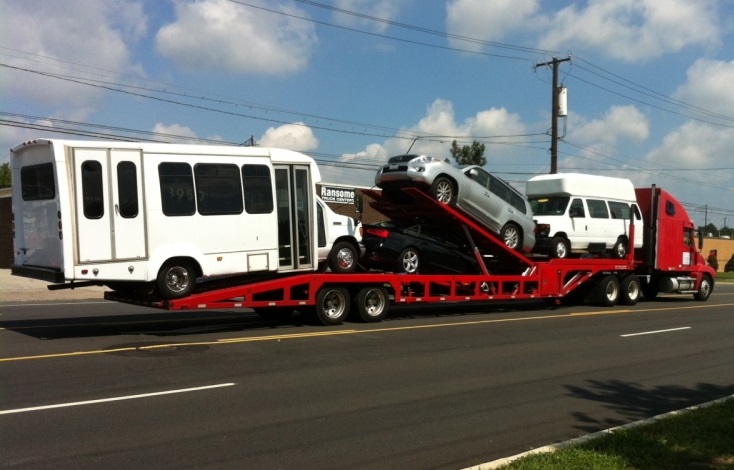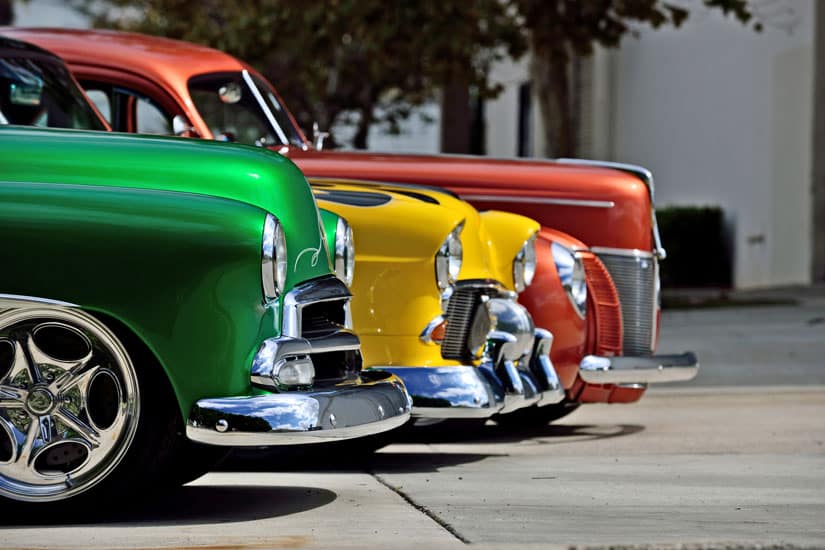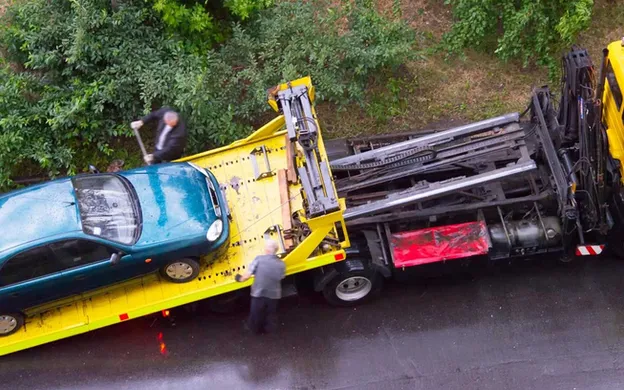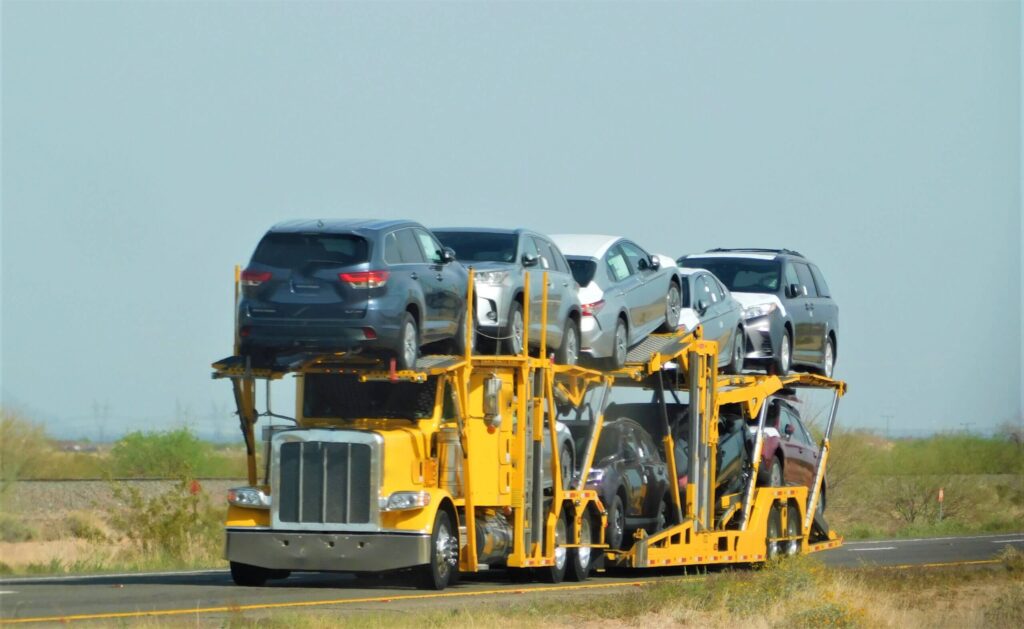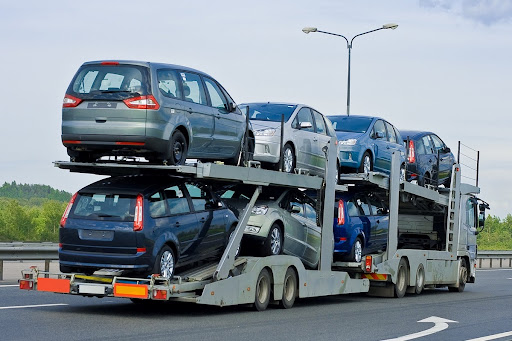Bulldozers are heavy-duty machinery that are not built for moving themselves from one location to another. So whenever a bulldozer needs to be transported, special equipment and procedures are required to move it safely and compliantly. In this article, we will take a detailed look at the different ways a bulldozer can be transported and […]
Category Archives: Vehicles Transport
How Many Cars Can a Car Carrier Carry?
Car carriers, also known as auto carriages or auto haulers, are commercial vehicles designed to transport passenger vehicles. Their main purpose is to deliver new vehicles from manufacturing plants to dealerships or transport used vehicles for auction or between dealers.
In this article, we’ll take a deep dive into understanding car carrier capacity – how many vehicles they can haul in a single trip.
Types of Car Carriers
Before understanding capacity, it’s important to know the different types of car carriers based on their size and configuration.
Enclosed Car Carriers
Fully enclosed car carriers have solid metal sides and roof to protect the transported vehicles. They come in various lengths to carry varying numbers of cars.
Open Car Carriers
Open car carriers, as the name suggests, do not have enclosed metal bodies. They consist of a metal frame with adjustable securing straps to tie down vehicles. Open carriers allow for higher vehicle capacity compared to enclosed ones.
Multi-Level Car Carriers
More advanced car carriers utilize the vertical space by stacking vehicles on more than one level. This significantly increases the hauling capacity compared to single-level carriers.
Speciality Car Transporters
In addition to standard car haulers, there are specialized transport vehicles for motorcycles, high-end exotic cars, damaged vehicles, etc. Their configurations vary based on the type of vehicles they are designed to carry.
Car Carrier Capacity by Vehicle Size
The number of vehicles a car carrier can haul depends greatly on their size and layout. Here are some typical vehicle hauling capacities:
- Compact Cars – Enclosed car carriers can carry 10-15 compact cars. Open carriers can haul 20-25 compacts.
- Mid-Size Cars – 9-12 mid-size vehicles in enclosed, 16-20 in open carriers.
- Full-Size Cars – 7-10 full-size sedans/SUVs in enclosed trailers. 12-15 possible in open carriers.
- Pickup Trucks – 5-7 in enclosed, 10-12 in open car haulers due to their larger footprint.
- Multi-Level Carriers – Can haul 30+ vehicles by stacking them efficiently over 2-3 levels.
So in summary, standard enclosed car carriers carry 10-15 average-sized vehicles, while open carriers increase that figure by 30-50%. Multi-level transporters nearly double the hauling capacity.
Maximizing Vehicle Capacity
Car haulers aim to maximize the number of vehicles transported in each trip to improve efficiency and reduce operating costs. Here are some strategies utilized:
Staggered Loading
Vehicles are not loaded in straight lines side-by-side. A staggered formation allows an extra row of vehicles along the sides.
Utilizing Dead Space
Every available inch of floor space underneath, between and around vehicles is occupied. Even small sports cars fill gaps between larger SUVs/trucks.
Adjustable Tie-Downs
Securing anchors, barriers and adjustable tie-down straps help accommodate vehicles of different sizes in irregular spaces.
Dollies and Risers
Mobile dollies and jack stands raise vehicles to efficiently double deck them. Leveraging height optimizes capacity.
Specialized Securing
Techniques like cradling, panel-to-panel contact & blocked wheels ensure maximum security even with tight vehicle packing.
Using these strategies, experienced car haulers have managed to cram in 30-40% more vehicles compared to conventional loading methods. Advanced planners can potentially maximize profits with every load.
Factors Impacting Capacity
While haulers aim to maximize capacity, there are limitations based on vehicle characteristics and regulations:
- Vehicle Size/Shape – Large trucks/SUVs occupy more space than compacts. Oddly shaped exotics require custom securing.
- Vehicle Condition – Damaged vehicles needing repairs may limit capacity due to special transport requirements.
- Weight Distribution – Heavier vehicles positioned strategically maintain safe weight balance of the overall load.
- Transportation Regulations – Federal & state laws specify maximum loaded weight, securement rules, safety modifications, insurance, etc.
- Road Conditions – Narrow or twisting roads may necessitate reducing vehicle count to ensure maneuverability and stability.
- Customer Needs – Special requests for protected/climate-controlled transport or delicate vehicles influence capacity.
Proper load planning factoring in these criteria helps transport vehicles safely within legal compliance without compromising service quality.
Car Carrier Fleet Size
Major vehicle transport companies operate large fleets to efficiently meet high-volume delivery needs across vast geographic areas. Here are some fleet size examples:
- Manheim Auto Transport – Over 2,500 car carriers, making it one of the largest fleets in North America.
- IFP Logistics – A leading auto transport provider with a fleet of 800+ car haulers transporting 500,000+ vehicles annually.
- Easy Auto Ship Auto Transport – Operates a network of over 15k carriers and trucks carrying 100,000+ vehicles each year.
- Todays Transport – Ranks among the top 10 auto transporters with a robust fleet exceeding 250 trailers.
- Tommy Gate – A specialized motorcycle transporter with a dedicated fleet of 150+ enclosed carriers.
Proper fleet sizing enables companies to reliably service high order volumes within short lead times. It also provides capacity to accommodate seasonal fluctuations in delivery demand.
Parting Words
Modern car carriers are sophisticated vehicles engineered to transport passenger vehicles in large numbers as efficiently as possible. Enclosed carriers typically haul 10-15 average cars, while open carriers increase that count by 30-50%. Maximizing space utilization through advanced stacking and loading techniques enables certain haulers to cram in 30-40% more vehicles.
While vehicle types, condition, regulations, and road safety influence capacity, state-of-the-art multi-level carriers routinely transport 30+ automobiles in a single trip. Leading auto transport fleet operators rely on carrying capacities of their hundreds of trailers to efficiently deliver hundreds of thousands of cars annually across North America. Overall, car carriers play a vital role in moving both new and used vehicles across vast land distances daily.
In the world of travel, there’s an adventurous spirit that drives explorers to seek new horizons, and for many, that includes the allure of international road trips in their beloved RVs. But the question arises: Can you transport an RV overseas? This comprehensive guide delves into the intricate details of transporting an RV to international […]
Transporting vintage cars requires special care and expertise to ensure these prized automotive gems arrive safely at their destination Vintage Car Transport. From meticulous planning to executing delicate loading and unloading procedures, a great deal of dedication goes into preserving the pristine condition of classic vehicles during transit. Vintage Car Challenges in Transporting Vintage Cars […]
Vehicle transportation is a major way goods and people move between different states in a country Vehicle Transportation From State To State. There are various modes of transport like trucks, trains, ships and airplanes that facilitate the movement of vehicles across long distances. In this article, we will explore the different aspects of vehicle transportation […]
Transporting vehicles can be a logistical challenge, whether you’re an individual moving a personal car or a business dealing with a fleet. To streamline the process and ensure accurate cost estimates, vehicle transport cost calculators have become an invaluable tool. These online tools take various factors into account, providing you with a reliable estimate of […]
Moving a vehicle from one state to another requires careful planning and logistics Transporting a Vehicle. There are a few different methods to transport vehicles over long distances, each with their own advantages and disadvantages. This article will explore the different options available, costs involved, required documentation, and tips for a smooth transition. Let’s get […]
Salvage vehicles come in all shapes and sizes. Not all salvage vehicles are suitable for transportation Salvage Vehicles Transported. In this article, we will explore the main types of salvage vehicles that can typically be transported from the salvage yard to wherever they need to go. Cars One of the most common types of salvage […]


